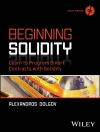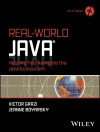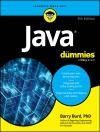Ready, set, code! A user-friendly guide introducing the C programming language to new and intermediate coders
The C programming language and its direct descendants are widespread and among the most popular programming languages used in the world today. The enduring popularity of C continues because C programs are fast, concise, and run on many different systems. Flexible and efficient, C is designed for a wide variety of programming tasks: system-level code, text processing, graphics, telecommunications, and many other application areas. C All-in-One Desk Reference For Dummies is for beginning and intermediate C programmers and provides a solid overview of the C programming language, from the basics to advanced concepts, with several exercises that give you real-world practice.
C All-in-One Desk Reference For Dummies covers everything users need to get up to speed on C programming, including advanced topics to take their programming skill to the next level. Inside you’ll learn
* The entire development cycle of a C program: designing and developing the program, writing source code, compiling the code, linking the code to create the executable programs, debugging, and deployment
* The intricacies of writing the code — the basic and not-so-basic building blocks that make up the source code
* Thorough coverage of keywords, program flow, conditional statements, constants and variables, numeric values, arrays, strings, functions, pointers, debugging, prototyping, and more
* Dozens of sample programs you can adapt and modify for your own use
Written in plain English, this friendly guide also addresses some advanced programming topics, such as
* Programming for the Linux/Unix console
* Windows and Linux programming
* Graphics programming
* Games programming
* Internet and network programming
* Hardware programming projects
The book includes a handy appendix that shows you how to set up your computer for programming, how to select and use a text editor, and fix up the compiler, to ensure you’re ready to work the author’s examples. Written by Dan Gookin, the author of the first-ever For Dummies book (and several others) who’s known for presenting complex material in an easy-to-understand way, this comprehensive guide makes learning the C programming language simple and fun. Grab your copy of C All-in-One Desk Reference For Dummies, so you can start coding your own programs.
สารบัญ
Introduction.
Book I: Hello, C.
Chapter 1: Your Basic C Program.
Chapter 2: How It All Works.
Chapter 3: More Basics, Comments, and Errors.
Chapter 4: Introducing Numbers and Variables.
Chapter 5: More Variables and Basic I/O.
Chapter 6: Decision Time.
Chapter 7: Looping.
Chapter 8: Using Constants.
Chapter 9: Mysterious Math.
Chapter 10: It’s Only Logical.
Book II: Middle C.
Chapter 1: Variables from Beyond Infinity.
Chapter 2: The Madness of Printf( ).
Chapter 3: Maniacal Math Functions.
Chapter 4: Not Truly Random.
Chapter 5: While Going Loopy.
Chapter 6: More Decision Making.
Chapter 7: The Goto Chapter.
Book III: Above C Level.
Chapter 1: Asking for Arrays.
Chapter 2: I Sing of Strings.
Chapter 3: Messing with Characters.
Chapter 4: Stinkin’ Structures.
Chapter 5: Creating Your Own Functions.
Chapter 6: Quitting Before You’re Done.
Chapter 7: More Variable Nonsense.
Book IV: Advanced C.
Chapter 1: Introduction to Evil Pointers.
Chapter 2: Getting to the *Point.
Chapter 3: Binary Bits.
Chapter 4: The Myth of the Array.
Chapter 5: Pointers and Strings.
Chapter 6: Crazy Arrays of Pointers.
Chapter 7: Functions and Pointers.
Chapter 8: Structures, Pointers, and the Malloc Deity.
Chapter 9: Does Anyone Have the Time?
Chapter 10: Building Big Programs.
Chapter 11: Help!
Book V: Disk Drive C.
Chapter 1: Just Your Standard I/O.
Chapter 2: Interacting with the Command Line.
Chapter 3: Hello, Disk!
Chapter 4: More Formal File Writing and Reading.
Chapter 5: Random Access Files.
Chapter 6: Folder Folderol.
Chapter 7: Under New File Management.
Book VI: The Joy of Linked Lists.
Chapter 1: Why Linked Lists?
Chapter 2: Dawn of the Database.
Chapter 3: Storing a Linked List on Disk.
Chapter 4: The Nightmare of the Double-Linked List.
Book VII: Appendixes.
Appendix A: The Stuff You Need to Know before Reading Everything
Else in This Book.
Appendix B: ASCII Table.
Appendix C: Answers to Exercises.
Appendix D: C Language Keywords and Operators.
Appendix E: C Language Variable Types.
Appendix F: Escape Sequences.
Appendix G: Conversion Characters.
Index.
เกี่ยวกับผู้แต่ง
Dan Gookin has been writing about technology for 20 years.
He has contributed articles to numerous high-tech magazines and
written more than 90 books about personal computing technology,
many of them accurate.
He combines his love of writing with his interest in technology to
create books that are informative and entertaining, but not boring.
Having sold more than 14 million titles translated into more than
30 languages, Dan can attest that his method of crafting computer
tomes does seem to work.
Perhaps Dan’s most famous title is the original DOS For
Dummies, published in 1991. It became the world’s
fastest-selling computer book, at one time moving more copies per
week than the New York Times number-one best seller
(although, because it’s a reference book, it could not be
listed on the NYT best seller list). That book spawned the
entire line of For Dummies books, which remains a publishing
phenomenon to this day.
Dan’s most recent titles include PCs For Dummies, 9th
Edition; Buying a Computer For Dummies, 2005 Edition;
Troubleshooting Your PC For Dummies; Dan Gookin’s Naked
Windows XP; and Dan Gookin’s Naked Office. He
publishes a free weekly computer newsletter, ‘Weekly Wambooli
Salad, ‘ and also maintains the vast and helpful Web site
www.wambooli.com.












